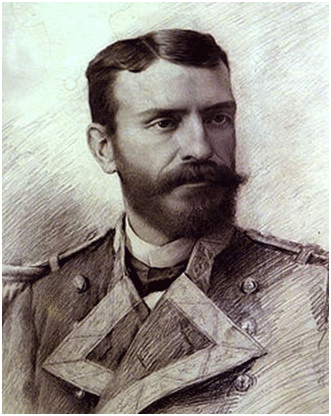Scientists and thinkers
"Great icons of our region"
Al-Ricotí - Diego Clemencín - Isaac Peral - Ibn Arabi - Ibn Sabin - Juan de la Cierva
Al-Ricotí

One of the great figures for history that has left the Valley of Ricote is to Al- ricotí . This great thinker had been influenced by a community of Muslim philosophers installed in Ricote since the ninth century . He mastered the disciplines of philosophy, medicine and music among others. Such was his fame, even the Infante Don Alfonso , future Alfonso X ' El Sabio ' , asked about the wisdom of the Islamic philosopher of the kingdom of Murcia. Al- ricotí taught their knowledge in Murcia, but eventually strife between Muslims and Christians in the thirteenth century would the Muslim sage on the Moorish kingdom of Granada . A human , intellectual and wise figure , which he gave over a long period of XIII century classical and modern fame to Murcia city.
Diego Clemencín

It is an unpopular figure in Murcia cultural environment but recognized as a great literary commentator. He was born in Murcia on September 27, 1755 , is a descendant of a French and studied at the Seminary of San Fulgencio . He married in 1798 with Damasa Soriano Velasco . He was named academic history of the language . Also had its political , 1810 stage 1827. It was to be the librarian of Queen Elizabeth II , but the cholera epidemic ended Diego June 10, 1834 , leaving all his notes of the work of Don Quixote in his sons' hands that ended in 1839 . Clemencín notes are anchored in a neoclassical view of the work of Cervantes. They remain a valuable reference in the study of the great work of Cervantes.
Isaac Peral

Isaac Peral (Cartagena , June 1, 1851 - Berlin, May 22, 1895 ) was a scientist, sailor and Spanish military man , Lieutenant of the Navy and inventor of the first submarine torpedo boat , known as the submarine Peral. He had a career in the Spanish Armada , intervening in the Ten Years' War in Cuba and the Third Carlist War , which was congratulated and decorated . He also stressed on missions work and scientific origin : he wrote a "treaty theoretical and practical hurricane " he worked in the lifting channel plans Simanalés (Philippines) and in 1883 took over the chair of mathematical physics at the School of Advanced Studies of the Navy.
Ibn Arabi

It was a Sufi mystic , philosopher , poet , traveler and wise Andalusian Muslim. He was born on July 28, 1165 in Murcia ( Spain ) in a family of notables, at age 8 , his family moved to Seville , where he received a full literary , legal , philosophical and theological training. The desire to know Ibn Arabi led a traveling life , traveling Al- Andalus and North Africa to know different Sufi groups . After spending two years in Mecca he decided to continue their journey Baghdad , Mosul and Damascus Konya where he settled for 17 years until his death on November 16, 1240 .
Ibn Sabin

In the early thirteenth century, the Valley of Ricote was a haven of peace, tranquility and prosperity. In this environment he was born in Ricote in 1217 Ibn Sabin. His family enjoyed an excellent economic and social position. His father was mayor of Murcia and his brother got great posts in the political life of Al-Andalus. Ibn Sabin received his first training in Ricote, which at that time had a very good group of Muslim philosophers. He studied humanities and the doctrinal foundations of the Koran. Later he extends this first acquaintance with theology, law and philosophy. Ibn Sabin left the land and moved to Ceuta where he founded the sect of the Sabiníes. Such was his fame that the governor of the city entrusted you to answer four questions about philosophy as the emperor of the Holy Roman Empire Federico II had sent the Sultan. Ibn Sabin said. This response needs to Federico II, which answers to the wonderful gifts he showered. Ibn Sabin rejected, Ibn Sabin had to leave Ceuta to be accused of heterodoxy. He arrived in Mecca where he could live in peace. It has been rumored much about the death of ricoteño philosopher. Some historians say killed himself to imitate the death of great Greek thinkers. Others say he died for wanting to be God. He died in 1270, aged 53, in Mecca.
Juan de la Cierva

Juan de la Cierva and Codorníu, Murcia, 1895 - Croydon, UK, 1936) Spanish engineer. Son of the politician Juan de la Cierva, a child felt passion for the art of flying. In 1910 he witnessed the first air show in Barcelona, and at sixteen built a biplane with two friends, and called BCD.1, which rose successfully. Madrid won the title of civil engineer, a specialist in aircraft construction and airline pilots, while deepening in the aircraft in his spare time. Shocked by the crash of Captain Julio Ríos, he began to project a safer aircraft, rotary wing, would call gyroplane. Rigid fixation of the rotors to the central hub caused the failure of the first three prototypes designed. Articulating freely, de la Cierva managed sustentanción force necessary to lift the machine. The project finally came true in 1923 when the gyroplane made the first flight between the airports of Cuatro Vientos and Getafe in Madrid. The gyroplane crossed in 1928 the English Channel, and covered the distance that separates England from Spain in 1934. In 1931 he began his marketing and successive innovations introduced as the direct command or lift, enabled the development of multiple models of gyrocopter. De la Cierva died at forty-one years in a plane crash, without seeing his invention converted by helicopter.


